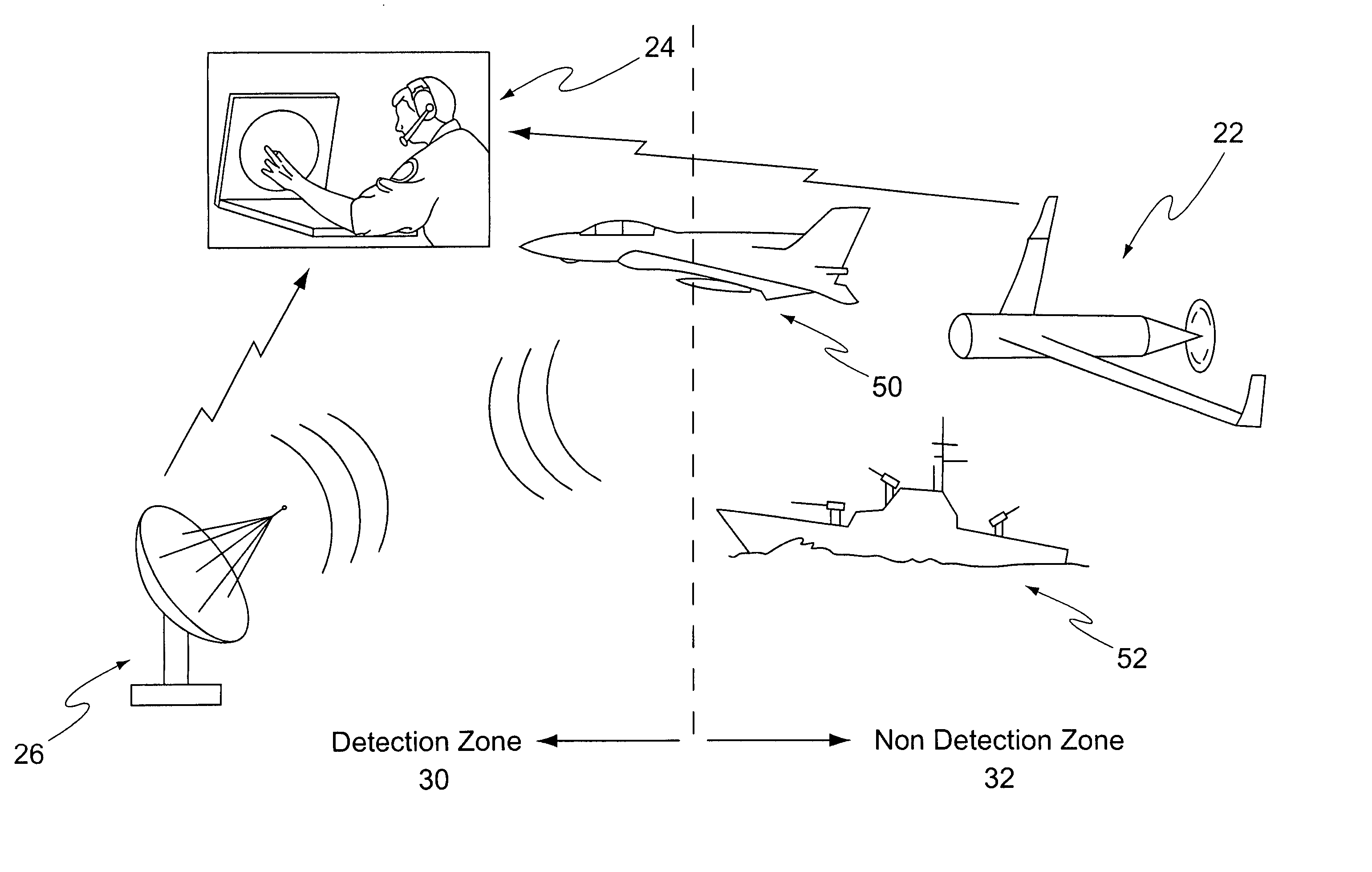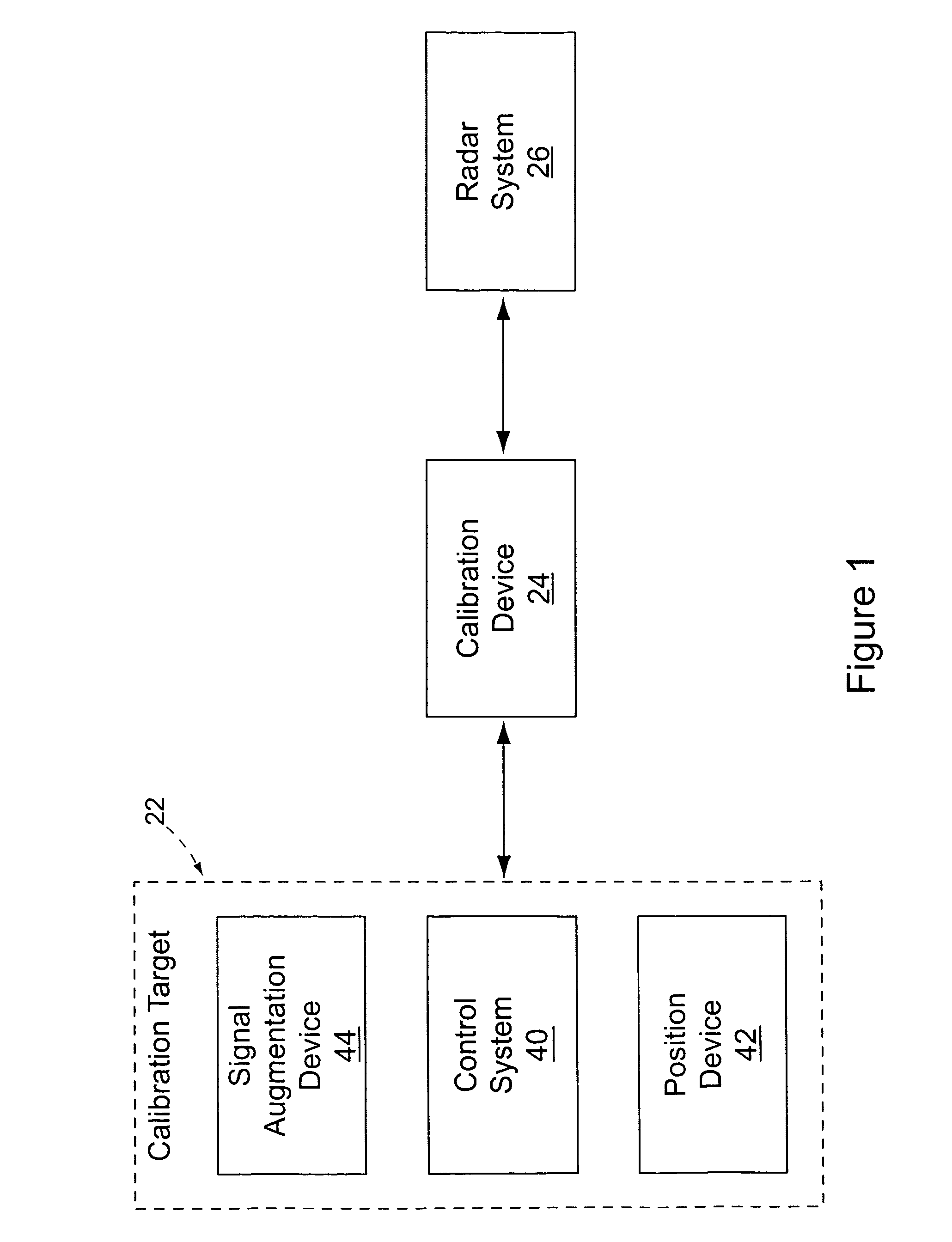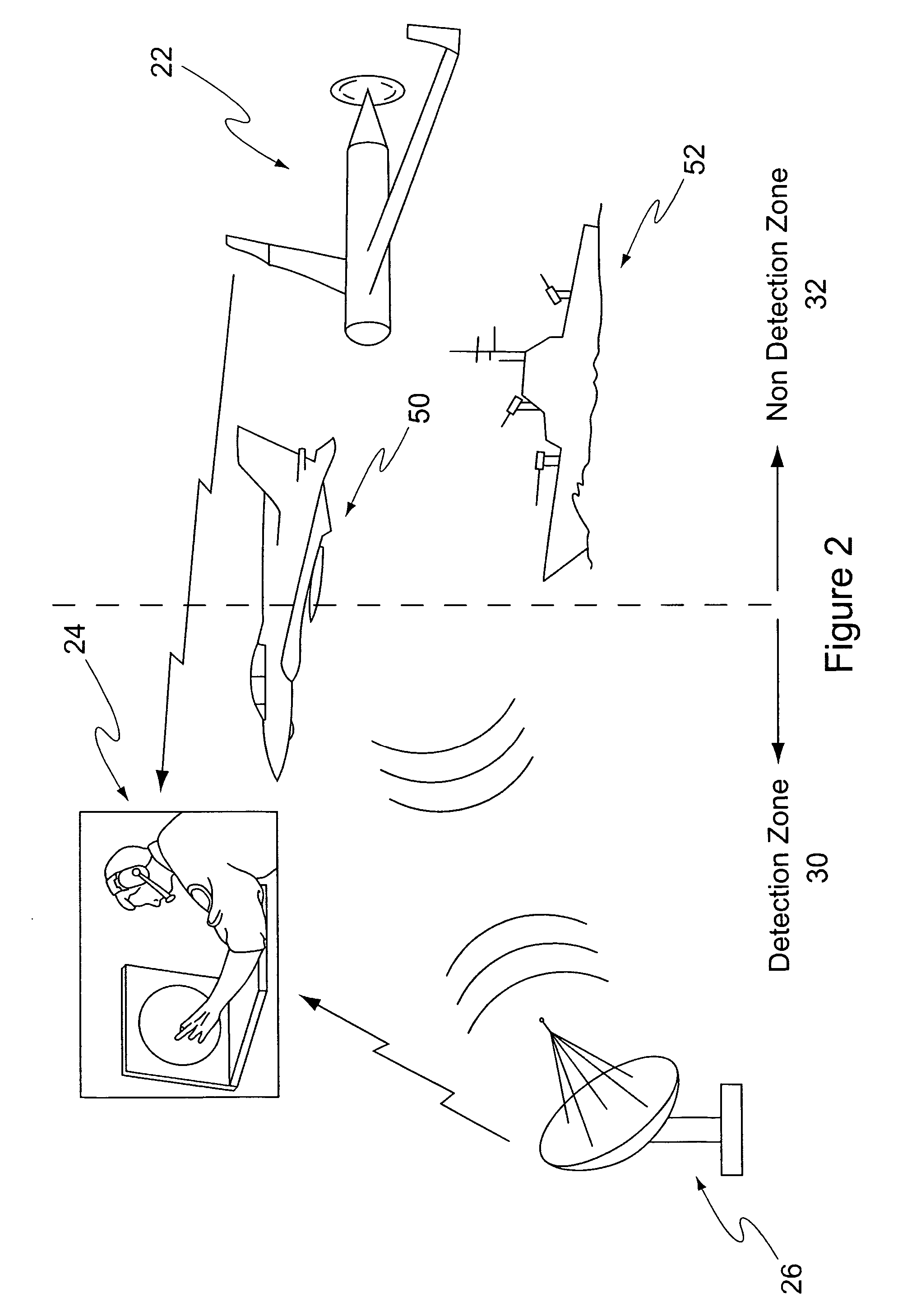System and method for radar detection and calibration
a radar detection and calibration technology, applied in the field of radar detection and calibration, can solve the problems of less time available to deploy defense systems or even gaps in detection coverage of radar systems, and the cost of manned test aircraft for this purpose, and achieve the effect of reducing the cost of manned test aircraft and reducing the cost of manned testing
- Summary
- Abstract
- Description
- Claims
- Application Information
AI Technical Summary
Benefits of technology
Problems solved by technology
Method used
Image
Examples
Embodiment Construction
[0011] Referring to the drawings, there is shown a preferred embodiment of a radar detection and calibration system 20 of the invention generally comprising a calibration target 22 and a calibration device 24 for calibrating a radar system 26. The radar system 26 has a detection zone 30 for a particular target within which the radar system is able to detect the target. The size of the detection zone 30 is dependent upon the size of the target's radar cross-section, such that the greater the target's radar cross-section the greater the radar's detection zone for that target. The radar's non-detection zone is identified as the zone 32 extending beyond the detection zone.
[0012] The calibration target 22 is preferably a UAV, such as the BOEING SCAN EAGLE™, although any suitable UAV may be used. The UAV includes a control system 40 adapted to navigate the UAV, and a position device 42 adapted to provide an actual position of the UAV at any given time.
[0013] In accordance with a preferr...
PUM
 Login to View More
Login to View More Abstract
Description
Claims
Application Information
 Login to View More
Login to View More - R&D
- Intellectual Property
- Life Sciences
- Materials
- Tech Scout
- Unparalleled Data Quality
- Higher Quality Content
- 60% Fewer Hallucinations
Browse by: Latest US Patents, China's latest patents, Technical Efficacy Thesaurus, Application Domain, Technology Topic, Popular Technical Reports.
© 2025 PatSnap. All rights reserved.Legal|Privacy policy|Modern Slavery Act Transparency Statement|Sitemap|About US| Contact US: help@patsnap.com



